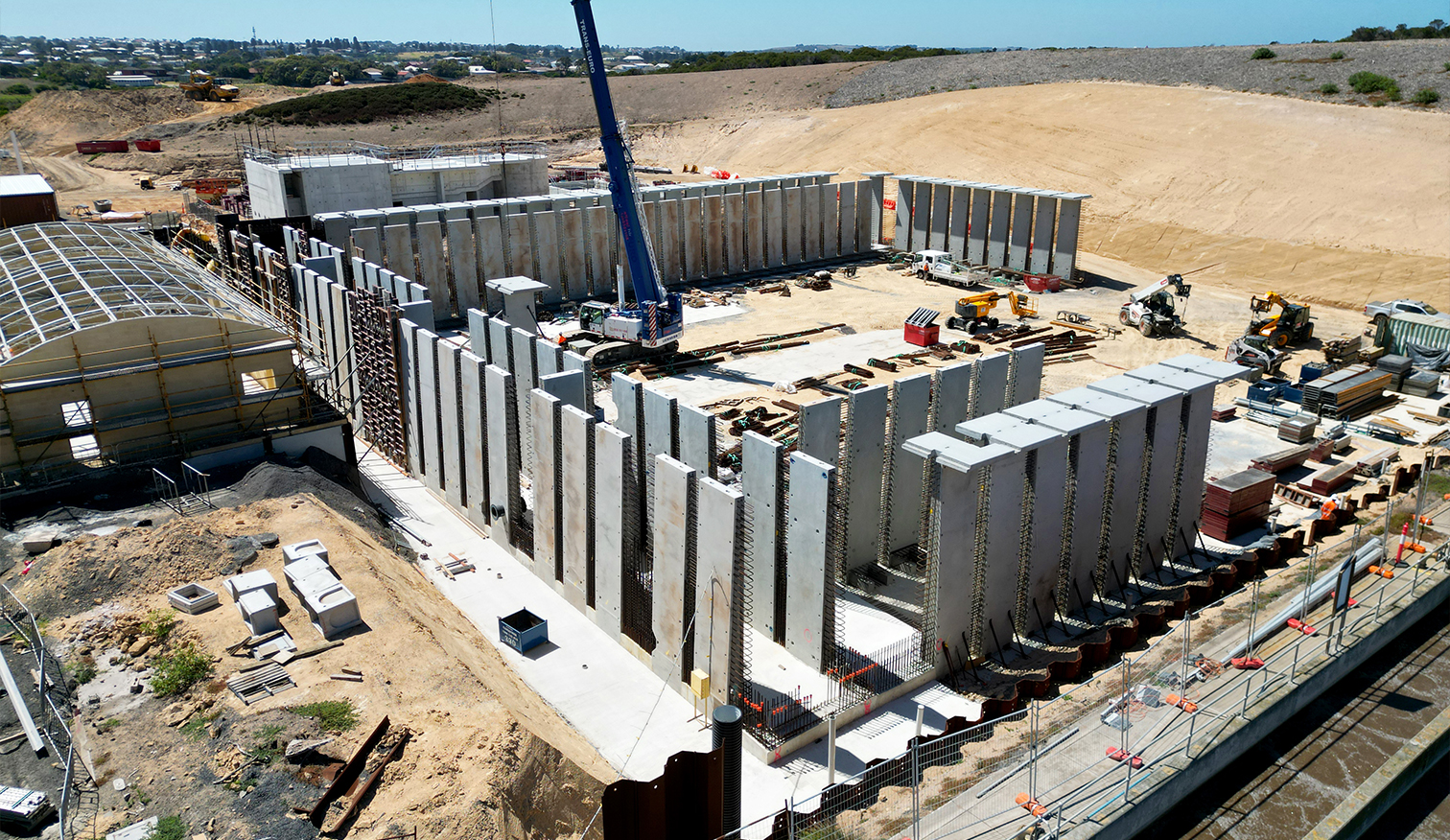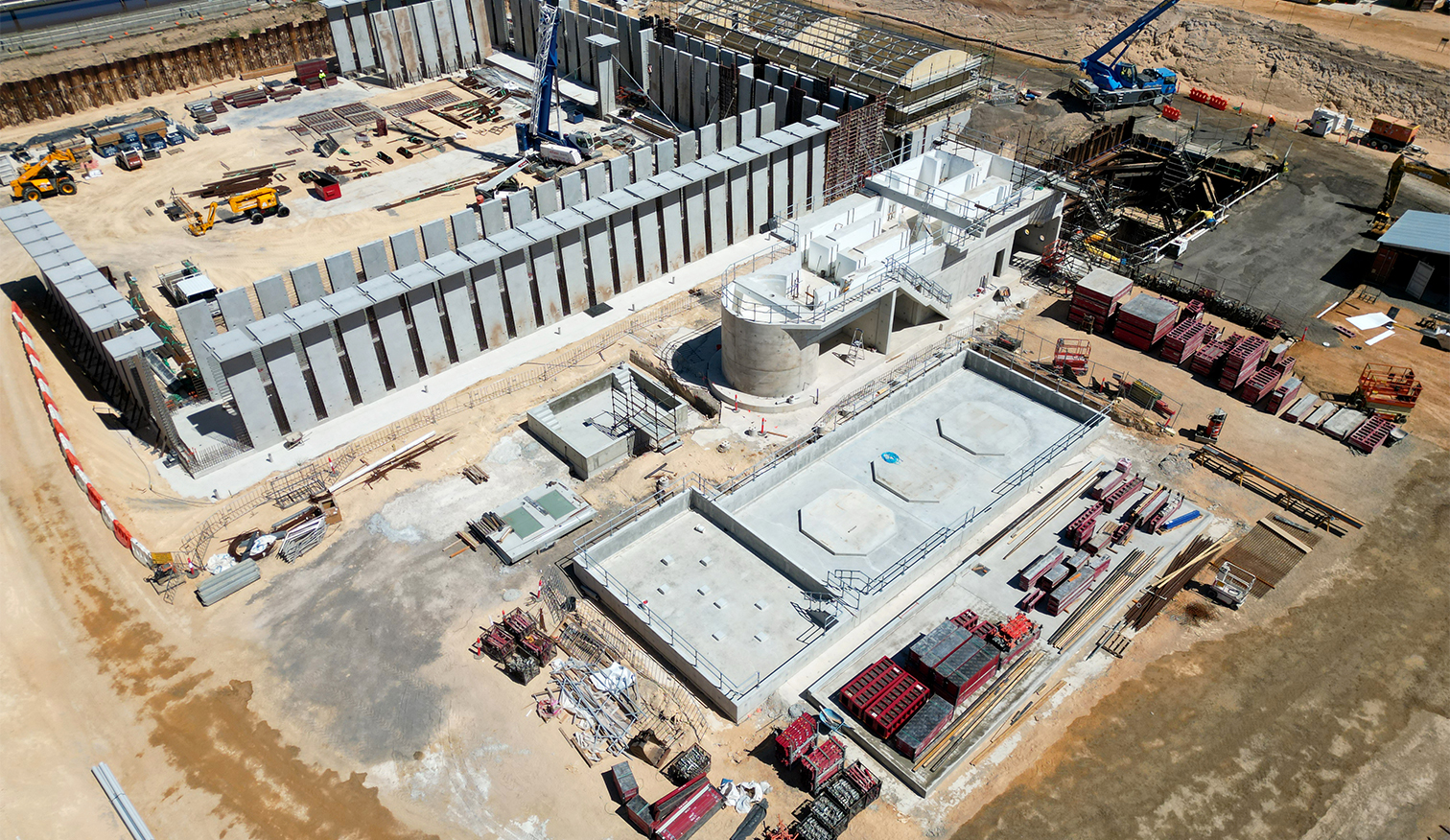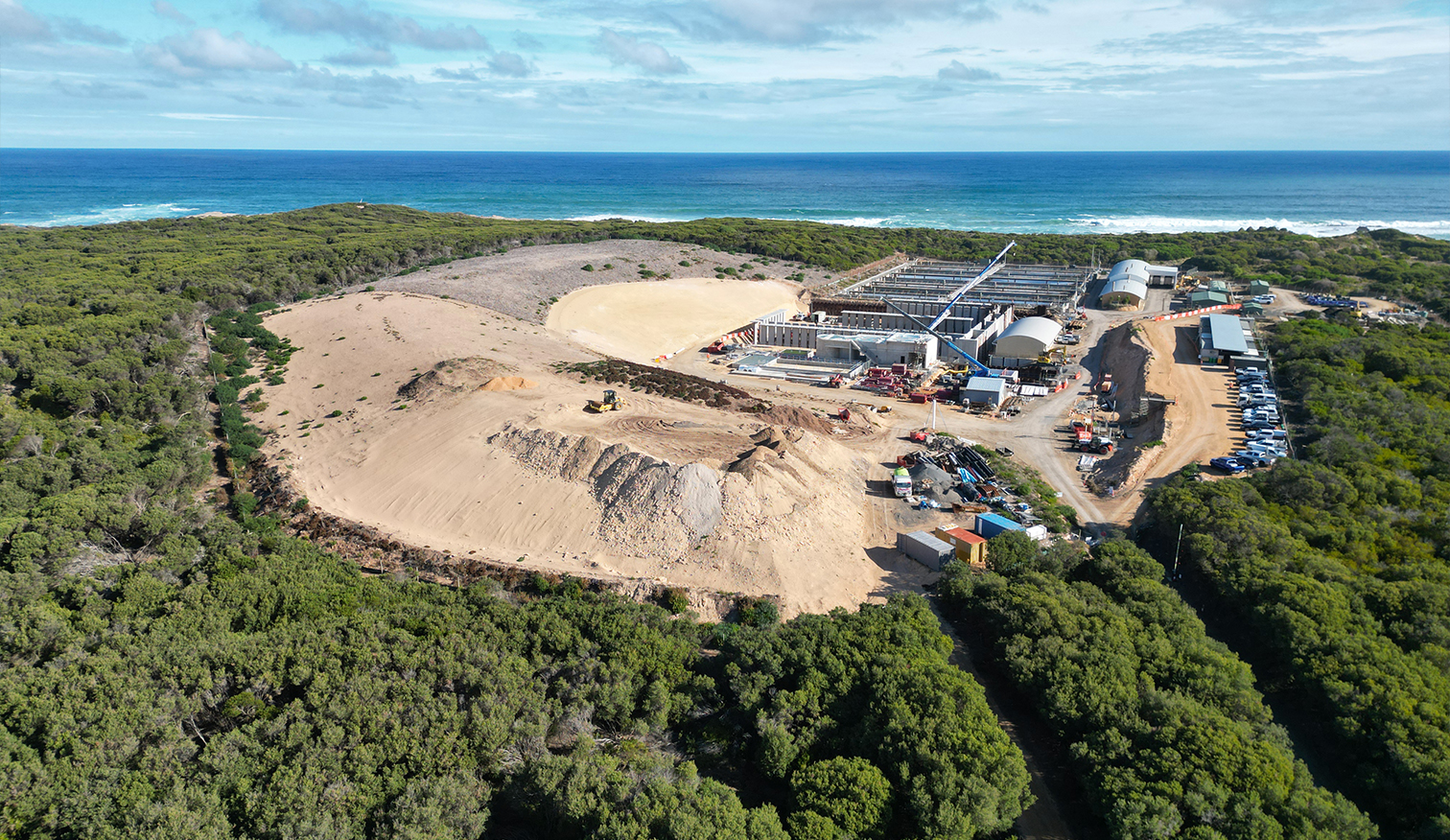Warrnambool Sewage Treatment Plant Upgrade
What’s been happening?
Construction work has been in full swing over the past few months with the new facilities taking shape. The electrical and mechanical fit-out is due to start soon.
Treatment tanks – Around 140 pre-cast concrete panels have been delivered to the site and lifted into place by crane where they are forming the walls of two huge sewage treatment tanks. Another 22 panels are still to arrive to complete the structure. The panels will be joined together using concrete stitch pours and we’ve already started this work on some of the wall junctions. This is a novel technique and only the third time in Australia that this type of construction has been adopted.
Inlet pump station – Concrete for the external walls was poured in early April during a well coordinated process. The 14-metre deep structure will accommodate a dual-well lift station. The internal wall is now under construction to enable safe future access for maintenance
Chemical dosing facility – A concrete bund for this area has also been poured and tested to ensure its integrity. The mechanical fit-out for the dosing equipment will start soon.
Motor control centre and blower building – This has been constructed with a curved roof to complement the site’s existing building. Once completed, it will house electrical equipment and aeration blowers for the new facilities.
What’s the next stage?
While the number of heavy transport movements will begin to reduce over the next few months, local residents may notice an increase in traffic from trade vehicles.
We’ll also be doing some work to bypass the existing screening plant, north of the site. Once the new influent pump station and screening facility is operational, the old site will be decommissioned.
When the new tanks are operational, they’ll feature an ultra-violet (UV) disinfection system. This will provide an additional layer of protection to the environment and human health. A procurement contract has been awarded and manufacturing has begun. A second UV system will then be installed on the four existing treatment tanks. The contract for this system will be tendered towards end of the year.
What will happen to the area surrounding the plant?
We know there’s been some concern about the removal of vegetation in the Thunder Point area and what it will look like in the future. Ensuring this area is returned to a state that protects its coastal aesthetics is a major priority for us.
We kept this in mind during the initial site clearing where we removed tonnes of contaminated material from the area. This soil contained heavy metal from the adjoining rifle target facility which had been abandoned many years earlier.
A firebreak was recently cleared around our fence line during a routine maintenance program. We carried this out by hand, which allowed us to retain low vegetation succulents for fire suppression, and avoid introducing invasive species.
We’ve engaged with community and environmental groups who have an interest in the Thunder Point area to consider how this particular site might look in future and agreed on a set of draft principles.
A draft landscape plan will be developed and shared with the community and local residents. It will then be finalised before we seek approval from Eastern Maar, Warrnambool City Council and the Department of Energy, Environment and Climate Action for the work.
We want to set the revegetation project up for success through careful consideration of the most appropriate species and planting at the right time of the year. We’re also hoping to enlist the support of interested residents and groups.
We’ve also installed new signage along the coastal walking paths from Thunder Point to Shelly Beach area. This was done in consultation with the council and includes an aerial map of our ocean outfall mixing zone and icons advising people not to swim, dive or fish in the area.





